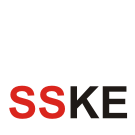From SSKE
| Line 1: | Line 1: | ||
<span style="font-size:large">[[SSKE Knowledge/isPartOfProgram::FEUP MESG - Services Engineering and Management]]</span> | <span style="font-size:large">[[SSKE Knowledge/isPartOfProgram::FEUP MESG - Services Engineering and Management]]</span> | ||
| − | = | + | <span style="font-size:large">Requirements Engineering for Services Course</span> |
=== Objectives, Skills and Learning Outcomes === | === Objectives, Skills and Learning Outcomes === | ||
| Line 11: | Line 11: | ||
1. Introduction: scope and importance of requirements engineering; notion of requirement; types of requirements; classification of requirements based on ISO/IEC 9126 standard; process of requirements engineering; systems life-cycle context.<br/>2. Requirements discovery: source of requirements; traditional techniques (surveys, interviews, document analysis); group techniques (brainstorming, focus groups, RAD/JAD workshops); prototyping techniques; techniques directed by models (aims and scenario); cognitive techniques (laddering); contextual techniques (observation and social analysis).<br/>3. Analysis and negotiation of requirements: checklists, interaction or dependence matrices, requirements risks and priorities; consistence verification, requirements modeling (use case modelling and domain models)<br/>4. Requirements specification: structuring requirements documents; requirements table; wikis<br/>5. Requirements validation: checklists, prototyping, model validation, acceptance tests.<br/>6. Requirements management: alteration management, requirements attributes, requirements traceability; requirements management tools. | 1. Introduction: scope and importance of requirements engineering; notion of requirement; types of requirements; classification of requirements based on ISO/IEC 9126 standard; process of requirements engineering; systems life-cycle context.<br/>2. Requirements discovery: source of requirements; traditional techniques (surveys, interviews, document analysis); group techniques (brainstorming, focus groups, RAD/JAD workshops); prototyping techniques; techniques directed by models (aims and scenario); cognitive techniques (laddering); contextual techniques (observation and social analysis).<br/>3. Analysis and negotiation of requirements: checklists, interaction or dependence matrices, requirements risks and priorities; consistence verification, requirements modeling (use case modelling and domain models)<br/>4. Requirements specification: structuring requirements documents; requirements table; wikis<br/>5. Requirements validation: checklists, prototyping, model validation, acceptance tests.<br/>6. Requirements management: alteration management, requirements attributes, requirements traceability; requirements management tools. | ||
| − | [[ | + | [[SSKE Knowledge/isTaughtBy::Paiva, Ana Cristina Ramada | ]] |
| − | [[SSKE Knowledge/ | + | [[Category:SSKE Knowledge/University Course|SSKE_Knowledge/University_Course]] |
Latest revision as of 00:08, 19 May 2012
FEUP MESG - Services Engineering and Management
Requirements Engineering for Services Course
Objectives, Skills and Learning Outcomes
To endow students with skills to plan, manage and carry out a process of analysis and specification of requirements of a service system based in technologies.
Program
1. Introduction: scope and importance of requirements engineering; notion of requirement; types of requirements; classification of requirements based on ISO/IEC 9126 standard; process of requirements engineering; systems life-cycle context.
2. Requirements discovery: source of requirements; traditional techniques (surveys, interviews, document analysis); group techniques (brainstorming, focus groups, RAD/JAD workshops); prototyping techniques; techniques directed by models (aims and scenario); cognitive techniques (laddering); contextual techniques (observation and social analysis).
3. Analysis and negotiation of requirements: checklists, interaction or dependence matrices, requirements risks and priorities; consistence verification, requirements modeling (use case modelling and domain models)
4. Requirements specification: structuring requirements documents; requirements table; wikis
5. Requirements validation: checklists, prototyping, model validation, acceptance tests.
6. Requirements management: alteration management, requirements attributes, requirements traceability; requirements management tools.



